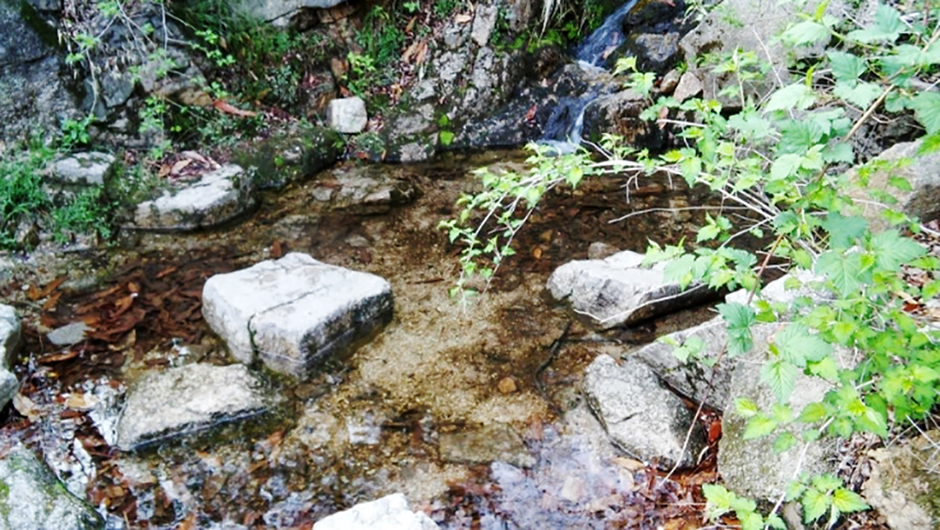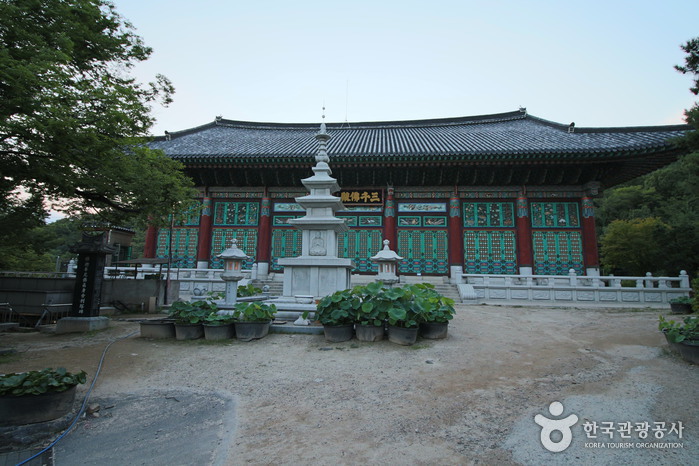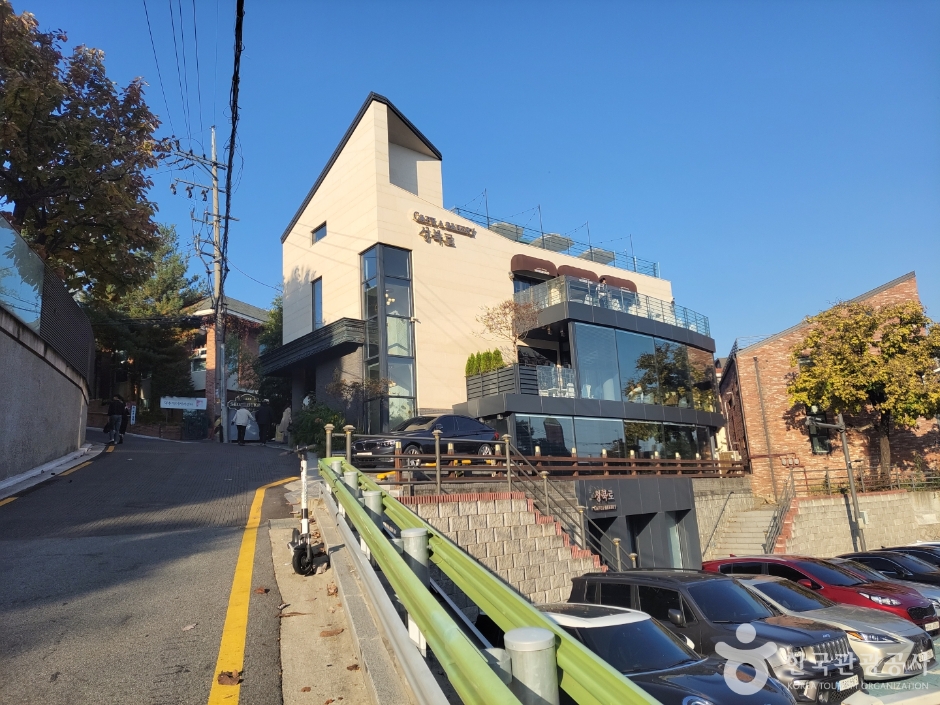E-Mart - Guro Branch [Tax Refund Shop] (이마트 구로)
13.1Km 2024-04-22
43, Digital-ro 32-gil, Guro-gu, Seoul
-
Suseongdonggyegok Valley (수성동계곡)
13.2Km 2023-08-17
185-3, Ogin-dong, Jongno-gu, Seoul 서울특별시 종로구 옥인동
Suseong-dong Valley's stream runs down from Inwangsan Mountain and joins Cheonggyecheon Stream, and it is said that the name of the village was called Suseong-dong during the Joseon dynasty due to the loud and clear sound of the flowing water. It appears in the painting "Jangdong Palgyeongcheop," which is Jangdong Eight Scenic Views, that depicts the eight scenic views of Bugaksan Mountain and Inwangsan Mountain as well as in other historical books of the Joseon dynasty as a place of scenic beauty. The valley was so famous for its beauty, that Prince Anpyeong of the Joseon dynasty built his house "Bihaedang" to fully enjoy the view, and the valley and its stone bridge were designated as a cultural property of Seoul in 2010.
Olens - Sangsu Branch [Tax Refund Shop] (오렌즈 상수)
13.2Km 2024-04-22
1F, 61-1, Wausan-ro, Mapo-gu, Seoul
-
Masichaina (맛이차이나)
13.2Km 2024-03-20
68, Dongmak-ro, Mapo-gu, Seoul
Opened by a former chef of a famous Hotel, Masichaina serves a hotel-style Chinese dining. The open kitchen style allows patrons to watch their meals being prepared. Cusotmers can choose set menus A, B, or C that include dishes such as tangsuyuk (deep-fried pork with sweet and sour sauce), cream sewoo (shrimp with cream sauce), paobochae (stir-fried seafood and vegetables), and haemul nurungji tang (scorched rice soup with seafood).
Lotte Mart - Uiwang Branch [Tax Refund Shop] (롯데마트 의왕점 [사후면세점])
13.2Km 2024-04-16
7, Gyewondaehak-ro, Uiwang-si, Gyeonggi-do
-
Lotte Mart - Uiwang Branch [Tax Refund Shop] (롯데마트의왕점)
13.2Km 2024-04-22
7, Gyewondaehak-ro, Uiwang-si, Gyeonggi-do
-
Bongwonsa Temple (봉원사)
13.2Km 2023-03-13
120, Bongwonsa-gil, Seodaemun-gu, Seoul
+82-2-392-3007
Located on the outskirts of Ansan Mountain in Bongwon-dong, Seodaemun-gu, Seoul, Bongwonsa Temple, as the center of Korean Buddhism Taego, is a thousand-year-old temple with a long history and tradition. In 889 (3rd year of Shilla Queen Jinseong’s reign), Monk Doseon founded it at the ground of Yeonhui Palace (now Yonsei Univ.) and named it Banyasa temple. It was destroyed during the Imjin War in 1592, and later in 1748 (the 24th year of Joseon King Yeongjo’s reign), it was rebuilt and renamed “Bongwonsa” by two Buddhist monks, Chanjeup and Jeungam.
“Yeongsanjae,” one of the Buddhist rituals and also a National Intangible Cultural Property, takes place at Bongwonsa on June 6 every year wishing for world peace and the reunification of North and South Korea. It was designated as one of the Intangible Cultural Heritage of Humanity by UNESCO in 2009. During Yeongsanjae, visitors can enjoy the Buddhist arts such as Beompae (Buddhist temple music for rituals) and dancing. Also, during summertime, Seoul Lotus Flower Culture Festival takes place, where visitors can enjoy the beautiful lotus flowers which are a symbol of Buddhism.
MAADSTUDIO - Hongdae Branch [Tax Refund Shop] (메드스튜디오 홍대)
13.2Km 2024-04-16
1F Taehwa Plaza Bldg., 111, Wausan-ro, Mapo-gu, Seoul
-
Seongbukro (성북로)
13.2Km 2024-02-15
1-2F, 10 Seongbuk-ro 28-gil, Seongbuk-gu, Seoul
Seongbukro is a café located 15 minutes away from the UNESCO World Heritage site Changdeokgung Palace. With an elegant atmosphere, the café is structured with three floors and a rooftop. The signature menu is the mandarin latte, featuring a refreshing taste with plenty of tangerines in milk. Additionally, the café is known for making desserts on-site, following the principle of selling them on the same day they are produced. Signature desserts include croissants with milk cream and mont blanc.
G-line Book Street (경의선책거리)
13.2Km 2024-03-19
35 Wausan-ro 37-gil, Mapo-gu, Seoul
+82-2-3153-8353
G-line Book Street spans approximately 250 meters from Exit 6 of Hongik University Station to Wau Bridge, where the old train tracks remain intact. It serves as a prominent cultural hotspot in Hongik University, housing various bookstores and cultural spaces selling books on diverse topics. Independent bookstores, children's bookstores, specialty bookshops, and art galleries converge in this area, offering a rich tapestry of literary experiences.
![E-Mart - Guro Branch [Tax Refund Shop] (이마트 구로)](http://tong.visitkorea.or.kr/cms/resource/39/2880239_image2_1.jpg)

![Olens - Sangsu Branch [Tax Refund Shop] (오렌즈 상수)](http://tong.visitkorea.or.kr/cms/resource/76/2887976_image2_1.jpg)
![Lotte Mart - Uiwang Branch [Tax Refund Shop] (롯데마트 의왕점 [사후면세점])](http://tong.visitkorea.or.kr/cms/resource/64/2882064_image2_1.jpg)


![MAADSTUDIO - Hongdae Branch [Tax Refund Shop] (메드스튜디오 홍대)](http://tong.visitkorea.or.kr/cms/resource/93/2888693_image2_1.jpg)

 English
English
 한국어
한국어 日本語
日本語 中文(简体)
中文(简体) Deutsch
Deutsch Français
Français Español
Español Русский
Русский